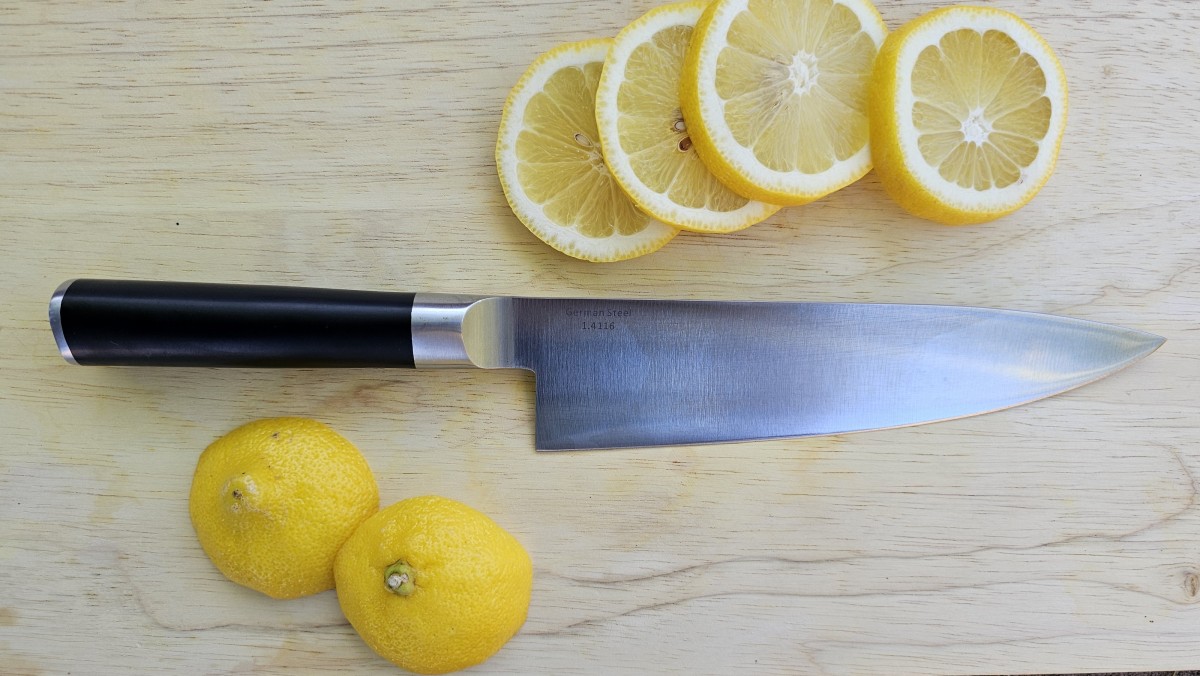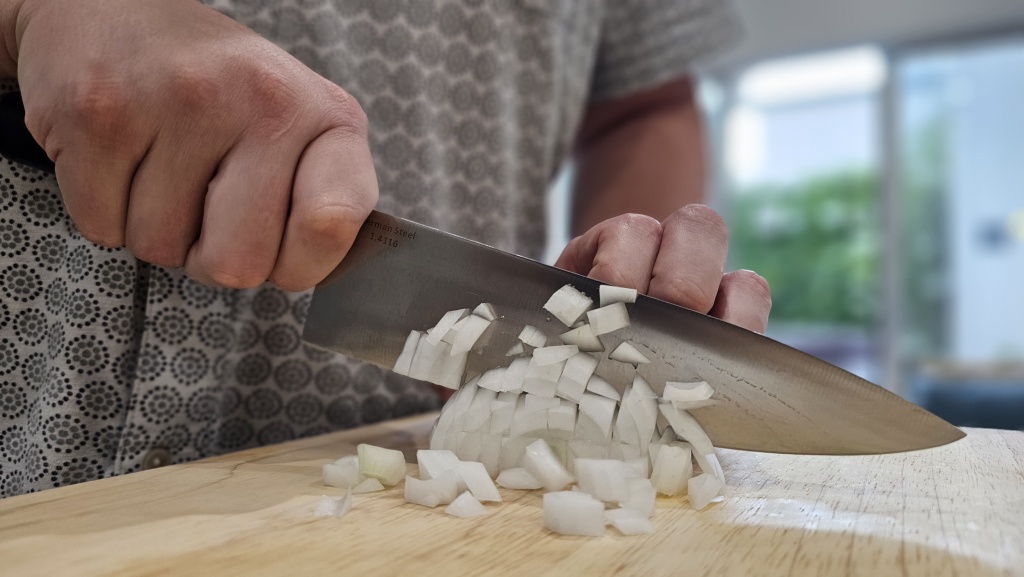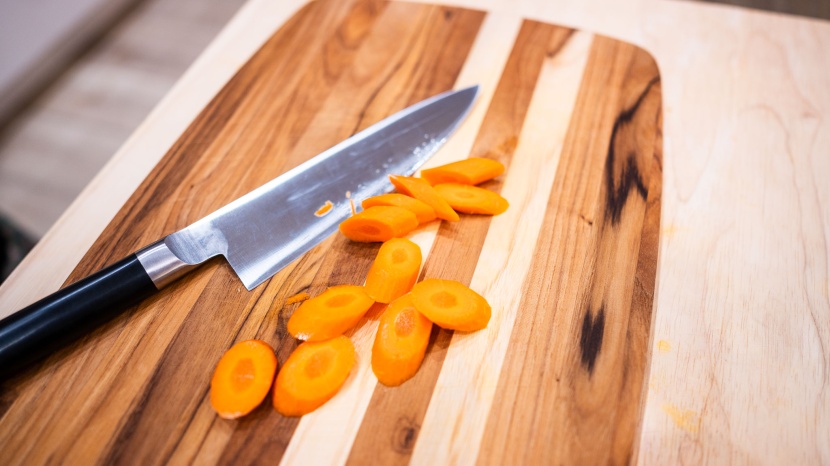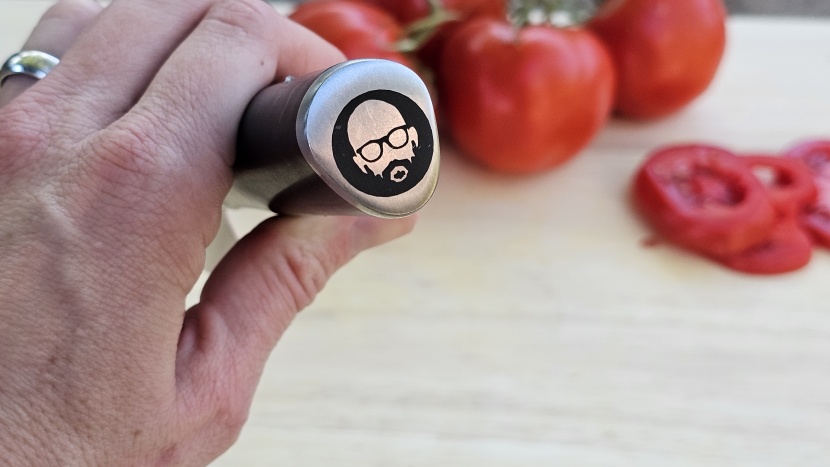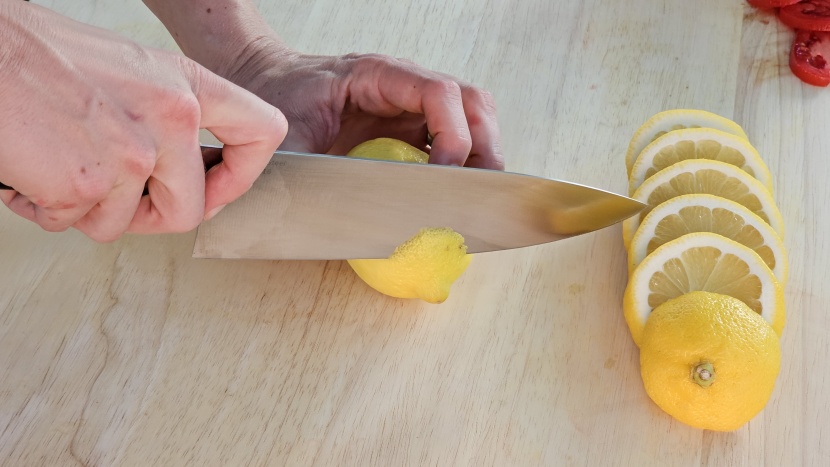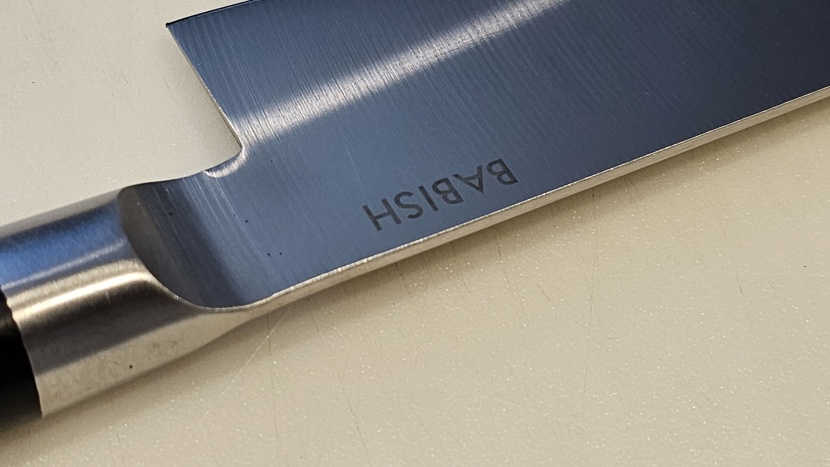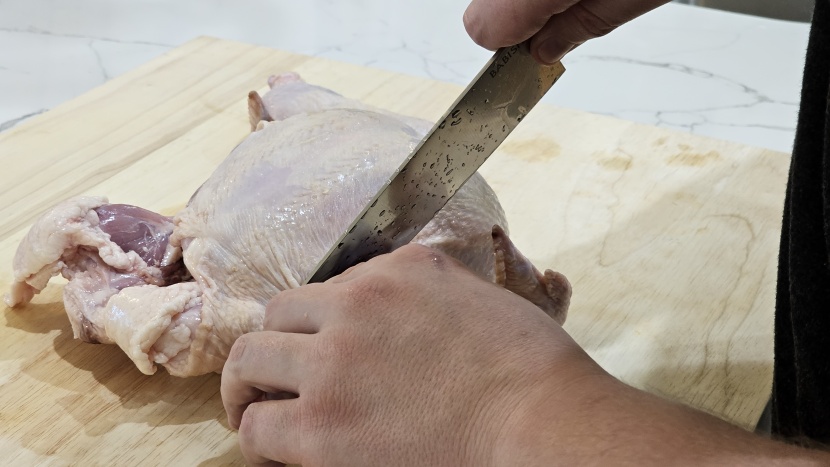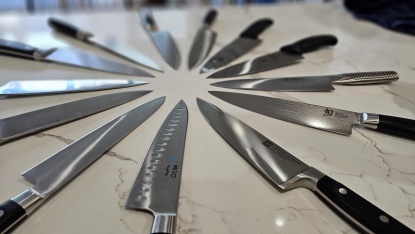Our Verdict
Compare to Similar Products
This Product Babish High-Carbon 8" | |||||
|---|---|---|---|---|---|
| Awards | Best Chef's Knife on a Tight Budget | Best Overall Chef's Knife | Best Value Chef's Knife | ||
| Price | $30 List $29.99 at Amazon | $170 List $170.00 at Amazon | $61 List $56.00 at Amazon | Check Price at Amazon | $25 List $18.22 at Amazon |
Overall Score  |
|||||
| Star Rating | |||||
| Bottom Line | A great value for a solid knife that holds its own against stiff competition | A weighty and elegant knife, this chef knife is a pleasure to use | A fantastic value for an all-around excellent blade, offering great performance at a low cost | Its looks don't translate into performance | Cheap and dull, this blade needs some work to be an acceptable cutting implement |
| Rating Categories | Babish High-Carbon 8" | Wusthof Classic 8" | Victorinox Swiss Cl... | Paudin Universal Cl... | Mercer Millenia 8" |
| Cutting Performance (30%) | |||||
| Practicality (30%) | |||||
| Ergonomics (25%) | |||||
| Build Quality (15%) | |||||
| Specifications | Babish High-Carbon 8" | Wusthof Classic 8" | Victorinox Swiss Cl... | Paudin Universal Cl... | Mercer Millenia 8" |
| Reported Blade Bevel Angle | 15° | 14° | 16° | 15° | 15° |
| Measured Blade Bevel Angle | 12° | 15.75° | 20° | 15° | 15° |
| Reported Steel Hardness | 55 HRC | 58 HRC | 56 HRC | 56 HRC | 53.5 HRC |
| Measured Steel Hardness | 51 HRC | 54 HRC | 54 HRC | 57 HRC | 52 HRC |
| Measured Factory Sharpness | 185 BESS | 140 BESS | 213 BESS | 205 BESS | 245 BESS |
| Country of Origin | China | Germany | Switzerland | China | Taiwan |
| Construction Method | Stamped | Forged | Stamped | Stamped | Stamped |
| Model Tested | 8" | Classic | 6.8063.20G | N1-Chef Knife | M22608 |
| Metal Type | 1.4116 | X50CrMoV15 | Not specified | 50Cr15Mov | High carbon steel (unspecified) |
| Measured Weight | 8.3 oz | 9.1 oz | 5.7 oz | 6.9 oz | 6.2 oz |
| Measured Blade Thickness at Spine | 2.00 mm | 2.60 mm | 2.20 mm | 1.90 mm | 2.41 mm |
| Full Bolster | No | Yes | No | No | No |
| Handle Material | Polymer | Polymer | Nylon | Pakkawood | Rubber and Plastic |
| Dishwasher Safe | Hand wash only | Hand wash only | Dishwasher safe, hand wash reccomended | Hand wash only | Hand wash only |
| Interesting Features | Babish face etched onto handle end | None | None | Faux Damascus pattern on blade | None |
Our Analysis and Test Results
The Babish is an 8-inch stamped steel blade made in China. It comes with a polymer handle with an etching of Babish's stylized face on the end. I measured it at a hefty 8.3 ounces.
Cutting Performance
The Babish pleasantly surprised us with its cutting performance. Despite some manufacturing flaws in the blade I discovered when I took it out of the box (which I discuss below in the section on Build Quality), once I cleaned it up, this knife was surprisingly capable.
The reported HRC (a measure of steel hardness) of this blade is 55. Our team in the GearLab measured it with an HRC of 51, which is still well within the bounds of what we expect from a quality blade.
| Reported Steel Hardness | Measured Steel Hardness | Blade Construction | Metal Type | |
|---|---|---|---|---|
| Babish High-Carbon | 55 HRC | 51 HRC | Stamped | 1.4116 German steel |
| Shun Classic | 60.5 HRC | 51 HRC | Forged | VG-MAX (propietary) |
| Victorinox Swiss Classic | 56 HRC | 54 HRC | Stamped | Not specified |
| Misen | 58 HRC | 53 HRC | Stamped | AUS-10 |
| Imarku | 57 HRC | 53 HRC | Stamped | 7Cr17MoV stainless steel |
Throughout several months of testing, I found that the Babish did, in fact, hold an edge quite well and had no issues with some common hang-ups like soft tomato skins and floppy basil leaves.
With a classic chef's knife shape, I was easily able to make precision cuts with the Babish — chiffonading some herb leaves and employing a brunoise cut on some onions and peppers.
Practicality
Despite its strengths, the Babish performed just average during my tests of this metric. It has the appearance of a pretty standard chef's knife, but the shape and weight of its handle held it back from being as dextrous as many others.
The surprising weight of the handle means that any grip other than your textbook grip becomes rather awkward, particularly during unusual cuts. I had a harder time doing things like splitting a butternut squash or breaking down a chicken, as the heavy, rounded handle of this knife just wasn't very secure in my hands.
With wet hands — from washing vegetables or fatty raw meat — the rounded handle of the Babish proved a weak point in its grip. The strongly angled, metal front end of the handle helped to stop the whole thing from twisting in my hands while breaking down a chicken and chopping a canteloupe, but my confidence using this knife was less than with many others.
Ergonomics
The basic shape and style of the Babish High-Carbon are based on other high-end knives, some of which are also in our full testing lineup.
Considering the handle shape itself, everyone on our testing team thought it was quite comfortable to hold with many different grips — similar to the more expensive knives this affordable model is based on.
| Measured Weight | Measured Spine Thickness | Bolster | Handle Material | |
|---|---|---|---|---|
| Babish High-Carbon | 8.3 oz | 2.00 mm | ✖ | Polymer |
| Shun Classic | 7.4 oz | 1.92 mm | ✖ | Pakkawood |
| Victorinox Swiss Classic | 5.7 oz | 2.20 mm | ✖ | Nylon |
| Misen | 8.4 oz | 2.00 mm | ✖ | Polymer |
| Imarku | 6.7 oz | 2.01 mm | ✖ | Pakkawood |
Its long handle gives a fair bit of versatility during normal cutting actions. Though it doesn't have a bolster, the front of the handle features a well-angled slope and defined edges that fit well in the hands of our whole testing team.
However, one significant drawback to the overall comfort and ergonomics of the Babish is the imbalanced weight of the handle. It is intensely weighted towards the back of the knife, and it felt out of balance when I was cutting. However, if you prefer to have the bulk of your knife gripped in your fist, perhaps this skewed blade won't bother you.
Build Quality
Although the Babish is a solidly built knife, I found some significant issues with its finishing. Immediately after unboxing, I noticed several small patches of rust on the metal portion of the handle!
Additionally, the tip of the blade had a small but noticeable burr left over from the manufacturing process and was not sharpened or polished away. Fortunately, I was able to clean all of these things up with about 20 minutes of light work in our shop. However, receiving an unfinished blade rubbed me the wrong way, and it was by far my biggest complaint about this knife.
Once the obvious faults of the Babish were fixed, the Babish easily passed our paper slice test.
Should You Buy the Babish High-Carbon 8"?
If you are looking to save money, you want the look of a more expensive knife, and you don't mind potentially having to make a few fixes to your chef knife, the affordable Babish could be just the knife for you.
What Other Chef Knives Should You Consider?
If you still want a great value and aren't bothered by the unconventional looks, the Victorinox Swiss Classic is an upgrade you should strongly consider. During our testing, I found that it exceeded the Babish in all categories for only a marginal increase in cost — but it looks completely different.


